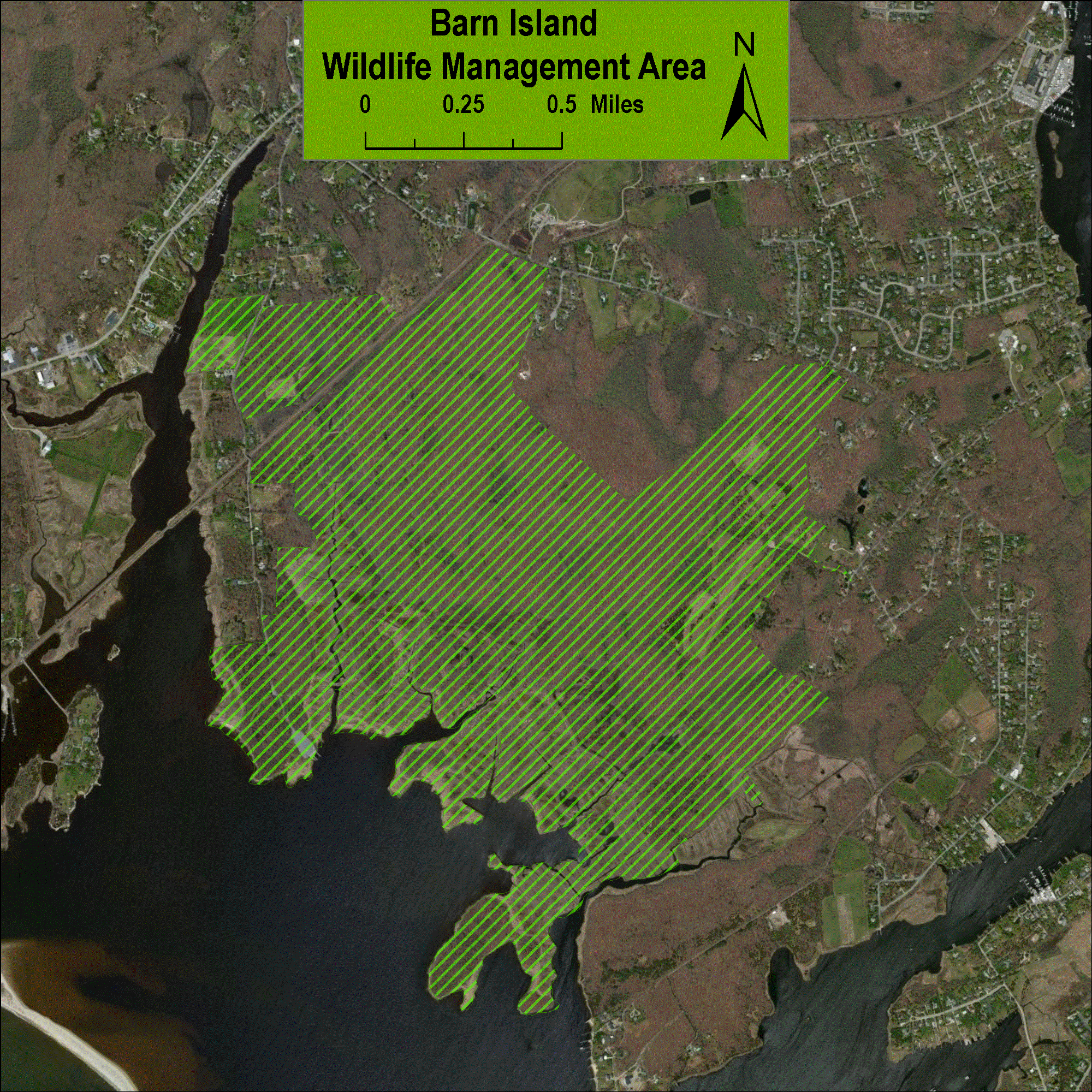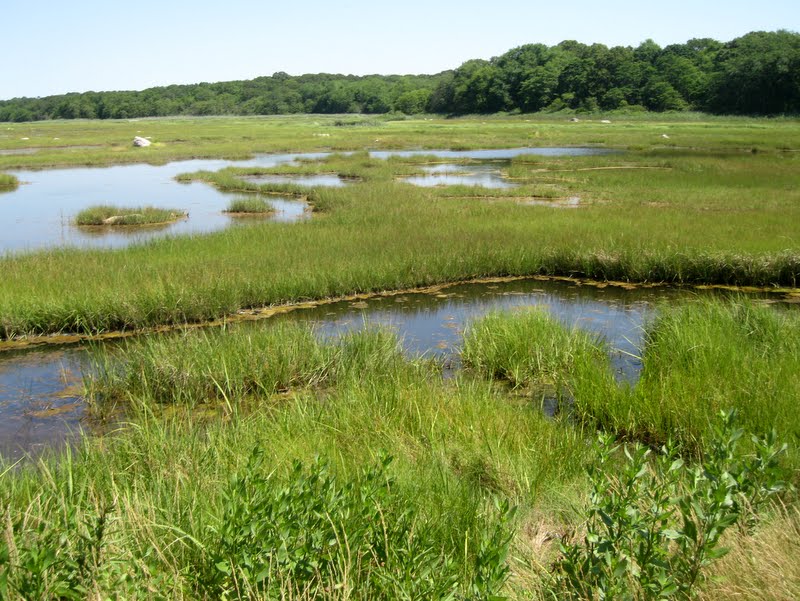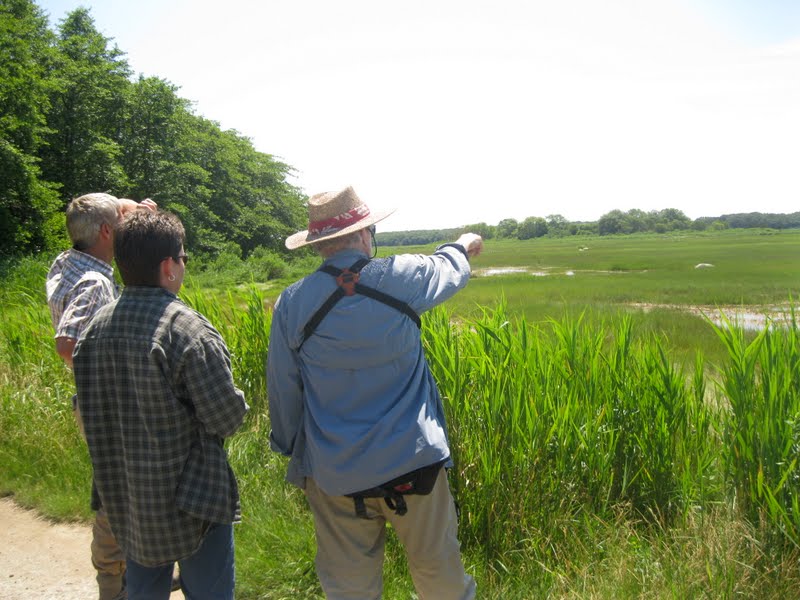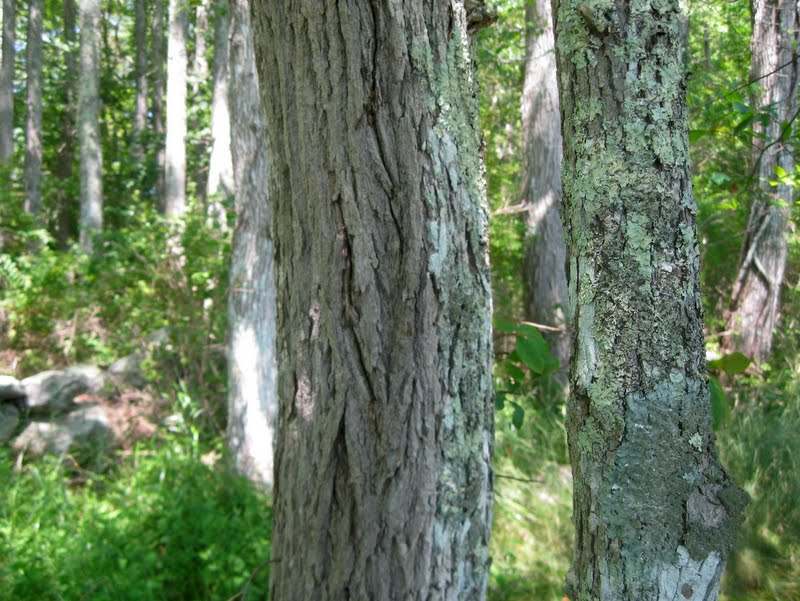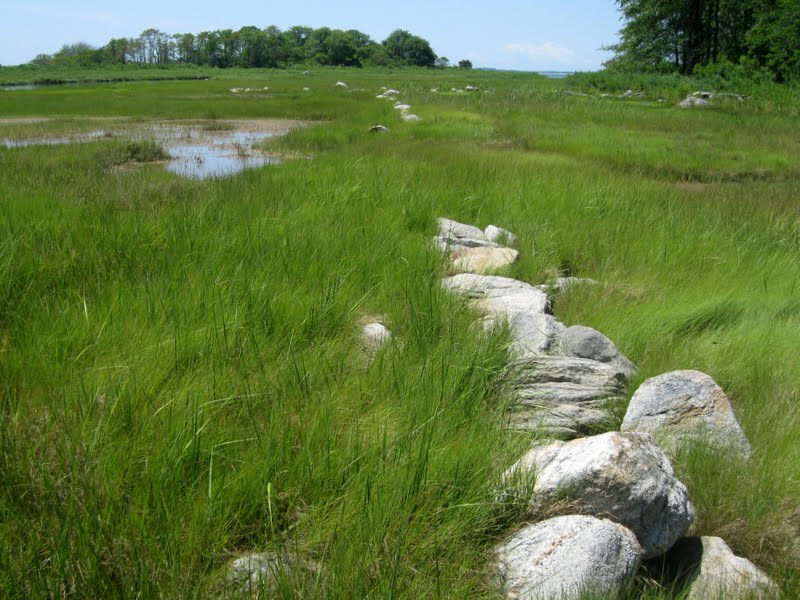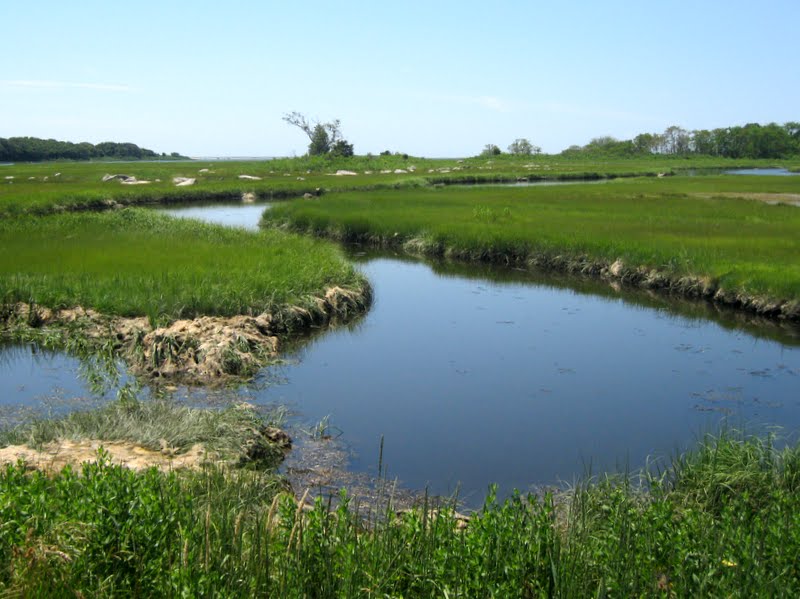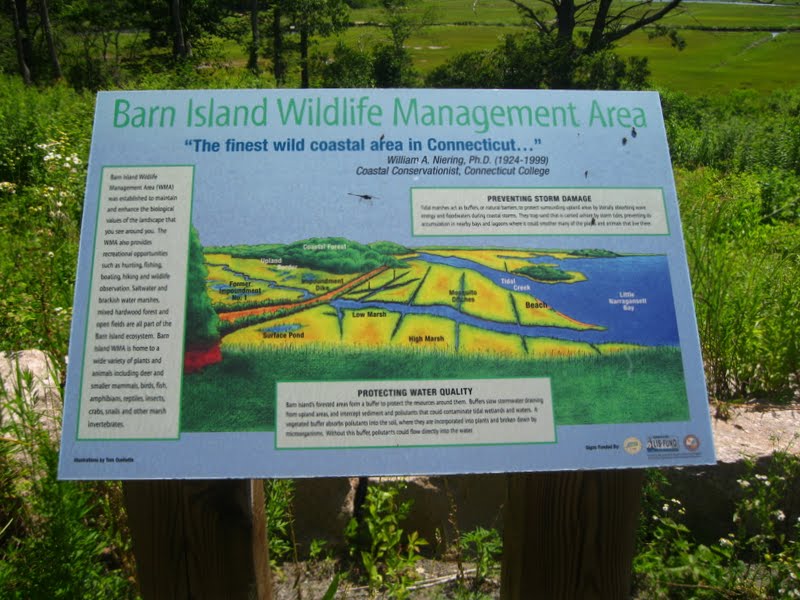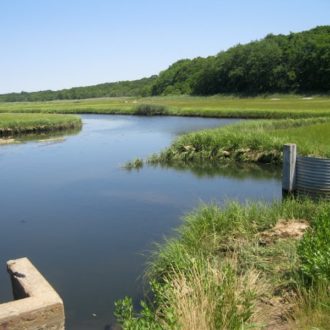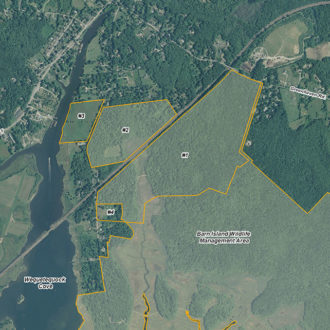Return to Main Stewardship Atlas Page
Barn Island
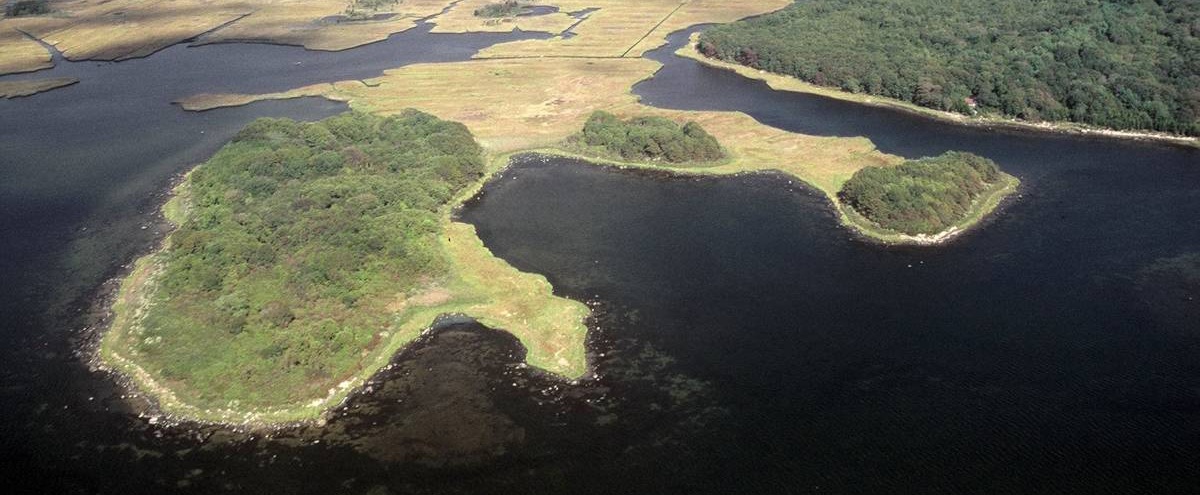
Location
Stonington, CT
Anchor Site(s)
Barn Island Wildlife Management Area
About the Site
Barn Island is the largest and single most ecologically diverse coastal Wildlife Management Area in Connecticut. With over 60 years of continuous wetland research at this site, Barn Island provides a rare window into long-term marsh development both before and after restoration efforts. Its 1,024 acres are marked by centuries of cultural and biological history, once a vital resource for early colonial settlers and Native Americans and now for scientists and outdoorsmen. Its diverse habitats support rare plants and animals which add to its rich ecological resource base. Barn Island’s sprawling landscape sustains a wide variety of ecosystems and recreational activities; it consists of salt and brackish marshes, one of the state’s largest coastal forests, hilly uplands, intertidal flats, sandy beach, and a rare sea-level fen.
Since the 1930s, human actions have dramatically shaped the ecological landscape of Barn Island. The draining of its tidal pools in an attempt to control a hazardous mosquito population sparked a series of reactionary restoration and remediation efforts, and set the context for decades of research on marsh ecology. Data on Barn Island continues to be utilized extensively by scientists and researchers exploring how salt marshes respond to sea-level rise and restoration efforts, making it a multi-faceted success story.
Watch Chris Elphick, an ornithologist and conservation biologist at the University of Connecticut, discuss the impact of sea-level rise on tidal marsh birds in Barn Island and other tidal marsh habitats.
Watch Jamie Vaudrey, a marine biologist at UConn, discuss the impacts of land use on the water quality of harbors and bays in Long Island Sound. She is interviewed on a research boat on Little Narragansett Bay off the coast of the Barn Island Stewardship Area.
- Barn Island is Connecticut’s largest, most ecologically diverse coastal Wildlife Management Area.
- The island’s 300 acres of salt and brackish marshes provide vital data on baseline tidal marsh vegetation and response of salt marsh system responses to restoration. This data is used prominently by scientists for tidal wetland research and restoration management. Barn Island is heralded as the exemplary model for other salt marsh restoration projects.
- The US Fish and Wildlife Service has recognized Barn Island as one of the 40 most significant coastal areas in southern New England.
- The National Audubon Society designated Barn Island a “Globally Significant Important Bird Area.”
- Barn Island contains a rare sea-level fen, a herbaceous wetland occurring at the salt marsh-upland transition zone influenced by freshwater groundwater discharges on saturated mineral soils dominated by sedges and sphagnum mosses.
- Barn Island and adjacent conservation land provide habitat for 25 federal or state-listed endangered, threatened, or special-concern species.
- Hike 4.5 miles of trails, among the most extensive in coastal Connecticut.
- Enjoy a regionally significant waterfowl hunting area, including American black duck, Atlantic brant, Canada goose, common goldeneye, bufflehead, and hooded, common, and red-breasted mergansers.
- Visit a marsh education and viewing area, with interpretative signs detailing ecology, natural history, successful restoration, and uses of the Wildlife Management Area.
- View a demonstration garden of native plants gives coastal residents examples of ways to landscape their own properties.
- Enjoy wildlife observation, hiking, snowshoeing, cross-country skiing, deer hunting, horseback riding, mountain biking, waterfowl hunting, fishing, crabbing, and boating.
- Barn Island Sentinel Monitoring Website (LIS Resource Center)
A comprehensive website on research and monitoring efforts at Barn Island prepared by Ron Rozsa, including access to data if available. The site also includes information about historic land uses and management activities, all of which have an influence on ecosystem change. - Bird Use of Restoration and Reference Marshes Within the Barn Island Wildlife Management Area, Stonington, Connecticut. Brawley et al. 1998.
This document summarizes two years of research on bird use of the Barn Island area, studying both restoration and reference marshes. While other research can be focused solely on vegetation change, this study provides insight into the activity of higher trophic levels (or, higher in the food chain) and confirms the positive results of tidal flooding to restore marshes.
- Tidal Wetland Restoration in Connecticut. Ron Rozsa, CT DEP. 1995.
This document is a great resource for understanding the fundamentals of wetland restoration. Ron Rozsa describes the process of restoring impounded wetlands at Barn Island, with useful context on the area’s history and aerial photography demonstrating changes before and after impoundment. He compares these successes with other sites in Connecticut that have undergone similar efforts and ends with a “Restoration Rules-of-Thumb” section that simplifies each stage of this complex undertaking.
- Less than 30 minutes from Barn Island sits Pachaug State Forest, the largest forest in the Connecticut state system. Its 24,000 acres include four popular hiking trails maintained by the Connecticut Forest and Parks Association, and a handicap-accessible trail with great scenic vistas. Through the center of this forest runs the Pachaug River and the 855-acre Great Meadow Swamp, a recognized National Natural Landmark. This forest is welcome to hikers, bikers, equestrians, campers, swimmers, and motorcyclists year-round.
- Down the road from the wildlife management area is the Barn Island Boat Launch. Check the Connecticut Coastal Access Guide for directions and more information.
- Check out the nearby Stonington Lighthouse Museum, which exhibits artifacts from Stonington’s maritime history. Be sure to visit the new exhibit on the life of Venture Smith, a former slave who bought farmland from his former master in in what is now part of the Barn Island Wildlife Management Area.
- The Connecticut Coastal Access Guide provides an overview of Barn Island, site map and directions, and details on the boat launch.
- The Denison Pequotsepos Nature Center offers a variety of excursions to Barn Island Wildlife Management Area.
- The Stonington Historical Society offers a wide variety of programs, walking tours, and open hours at the local libraries and museums.
- Many of the trails are unmarked, so hikers may want to bring maps or acquaint themselves with their route beforehand.
- During hunting season, hikers should exercise caution and wear protective orange clothing!
- You can bring your furry friend on your hike, but they must stay on a leash!
- Be sure to put on insect repellent, wear long sleeves, and check for ticks after leaving the park, especially in the summer months.
- Brawley, A.H., R.S. Warren and R.A. Askins. 1998. Bird use of restoration and reference marshes within the Barn Island Wildlife Management Area, CT, USA. Environ. Mgmt. 22:625-633.
- Rozsa, R. 1995. Tidal wetland restoration in Connecticut. pp 51-65. In: Dreyer, G.D. and W.A. Niering (eds.), Tidal marshes of Long Island Sound: ecology, history and restoration. Connecticut College Arboretum Bulletin 34. Connecticut College Arboretum, New London, CT.
- Warren, R. S., P. E. Fell, R. Rozsa, A. H. Brawley, A. C. Orsted, E. T. Olson, V. Swamy, W. A. Niering. 2002. Salt marsh restoration: 20 years of science and management. Restoration Ecology 10:497-513.
